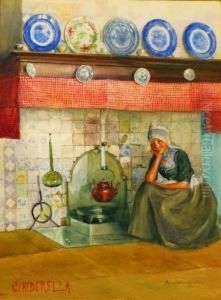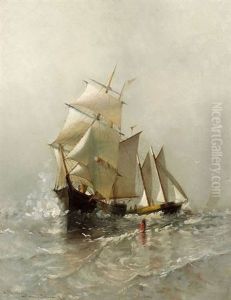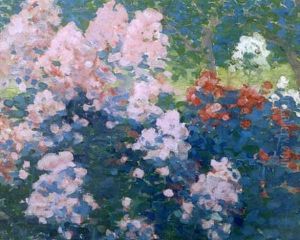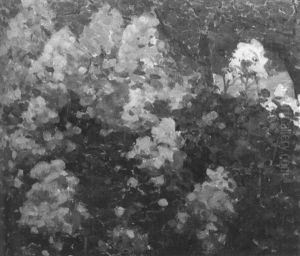Marcia Oakes Woodbury Paintings
Marcia Oakes Woodbury was an American painter born on June 29, 1865, in South Berwick, Maine. She was known for her intimate and delicate domestic genre paintings and insightful portraits. Marcia demonstrated artistic talent at an early age, and her family, recognizing her potential, supported her education in the arts.
Marcia attended the Cowles Art School in Boston, where she studied under Joseph DeCamp and Franklin Benjamin De Haven. In 1888, she furthered her studies in Paris at the Académie Julian, a progressive art institution known for admitting women students. There, she was taught by master artists like Gustave Boulanger and Jules Joseph Lefebvre. During her time in Paris, Marcia was exposed to various art movements and techniques, which influenced her evolving style.
In 1890, Marcia Oakes married fellow artist Charles H. Woodbury. The couple had a strong partnership, and they often worked and exhibited together. After their marriage, they spent summers in Ogunquit, Maine, which became a significant art colony, largely due to Charles' influence and the establishment of his summer school of drawing and painting there.
Marcia's work received considerable recognition during her lifetime. She exhibited at the Paris Salon, the Boston Art Club, the Pennsylvania Academy of the Fine Arts, and the Art Institute of Chicago, among other institutions. Her paintings often depicted scenes from her immediate environment, including her family and the landscapes of Maine and the places she traveled to with her husband. Her style is characterized by a sensitive use of light and a refined application of color.
Tragically, her career was cut short when she died on July 18, 1913, at the age of 48. Despite her early death, Marcia Oakes Woodbury left behind a legacy of artwork that continues to be appreciated for its grace and eloquence. Her paintings are included in several museum collections and are a testament to her skill as an artist and her unique vision.



